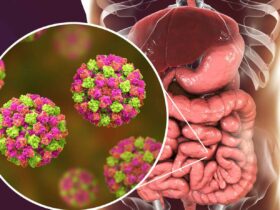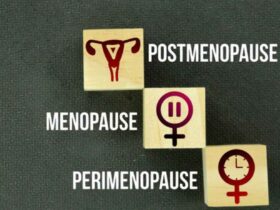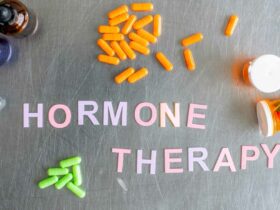In a recently made highly exposed discovery capable of transforming medicine, scientists have made a mind-blowing progress in the area of neuroregeneration. Scientists have uncovered the crucial key that gives the brain’s capability to regaining neurons, the cells that are fundamental components of the nervous system. This finding does not only point to a potential cure for the neurodegenerative diseases, Alzheimer’s, Parkinson’s, and stroke that currently have none, but it also gives hope for the people who are living with these diseases or whose kin are afflicted.
The Silent Thief: Understanding Neurodegenerative Diseases
Age-related neurodegenerative diseases are a group of progressive diseases characterized by reduction and decline of cognitive and motor abilities through loss of neurons. These ailments affect tens of millions of people globally, among which Alzheimer’s disease is the worst influencing about fifty million people around the world.

Historically speaking the brain was believed capable of limited repair. A difference between the neurons and some other cells in the body is a very low dividing ratio. This process leads to decrease in the regeneration of neurons that increases the pace progression of neurodegenerative diseases, wherein the loss of neuron surpass the regeneration of the brain.
Unlocking the Regenerative Potential: The Role of Astrocytes
The primary scientific paradigm of a recent research focuses on a particular brain cell type called astrocytes. For many years the functions of astrocytes in the nervous system were being considered to be in the role of support providers, providing nutrients and blood-brain barrier maintenance. Nevertheless, the scientists remark that they have disclosed to the worldwide community a new function of astrocytes that may generate new neurons.
The researchers have revealed that a specific protein called DLX2, which controls astrocyte behavior, is a molecular switch in this process. When switched to, DLX2 sends a signal which astrocytes turn down their way and convert to a more stem cell-like model. These new astrocytes are reprogrammed and they henceforth have the wonderful features such as the ability to replicative into new, functioning neurons.
A Glimpse into the Future: Potential Applications and Remaining Challenges
This discovery holds immense promise for the treatment of neurodegenerative diseases. Here’s how it could potentially revolutionize medicine:
- Neuroregeneration Therapies: Utilizing the features of DLX2 or similar molecules, scientists may be able to devise treatments that bring the process of self-healing in the brain into production. It may give rise to therapeutic interventions that support neuronal growth and in effect reduce neurodegenerative disease progress.
- Personalized Medicine: Understanding this role of DLX2 and other regenerative pathways could increase chances of specialized medication made for chosen patients. It could design therapies that are specific to every patient and the class of the disease the patient suffers from, thus improving the outcomes.
- Improved Drug Discovery: With this discovery, many mysteries are now being unraveled regarding the brain’s ability to regrow and repair itself. Such knowledge avails itself to the development of and testing of new drugs that may act on the phenomenon of neuroregeneration and treat neuronal disorders.
However, it's important to acknowledge the challenges that lie ahead:
- Safety and Efficacy: Widespread study needs to be conducted in order to guarantee that the treatment plan is not harmful and instead, effective. Clinical trials will be essential for defining such drugs’ effectiveness and safety profile in patients.
- Delivery Methods: Identifying and overcoming the potential hurdles regarding the effective method delivery of these possible treatments to the particular brain regions is the major challenge. Researchers will face the problem of blood-brain barrier permeability and development of desirable drugs to combat target cells.
- Ethical Considerations: The possibility of control of cellular reproduction in the brain should be bifurcated into a variety of ethical problems that need a timely resolution. The possible side effects and unintended consequences must be studied in great depth and with the highest component of uncertainty.
A Spark of Hope: The Road Ahead for Regenerative Neurology
The finding of a protocol of brain cells regeneration represents a first class leap in the comprehension of the human nervous system. Although we still have challenges, this discovery gives an example of hope to those creating diseases with the neuronolectives and neurodegenerative disorders suffering. Future studies and their results may contribute to transform this discovery into clinical applications where neurodegenerative disease can be treated effectively, possibly reversed which may be a future for the control and prevention of the presently incurable diseases.
Here are some additional points to consider:
- International Collaboration: The tic imbalance worldwide is considered a major issue. As for the effective therapy development in the field of regenerative medicine, the big players on the world stage are required to collaborate: researchers, clinicians and pharmaceutical companies for acceleration process to be the result.
- Public Awareness and Funding: Without raising public attention to neurodegenerative disorders and the necessity of finance the research in this area it will be impossible to advance. An abundance of resources will enable us to conduct more studies and clinical trials, by doing so will move us towards the dream of reparative neurosciences.
- A New Era of Brain Research: This guy will bring a new age into brain research. With the knowledge of the mechanism of neuroregeneration, we will not only be able to improve the therapies for the neurodegenitative diseases but also will be able to provide a great deal of information into other neurological disorders as well as brain functions.
The procedure of discovering the genuine source of the powerful potential of brain cell regeneration is a never-ending operation and continuous determination. This seminal finding really makes the fight against neurodegenerative diseases much closer, with a bright, effective regenerating future expectedly coming soon.















Leave a Reply